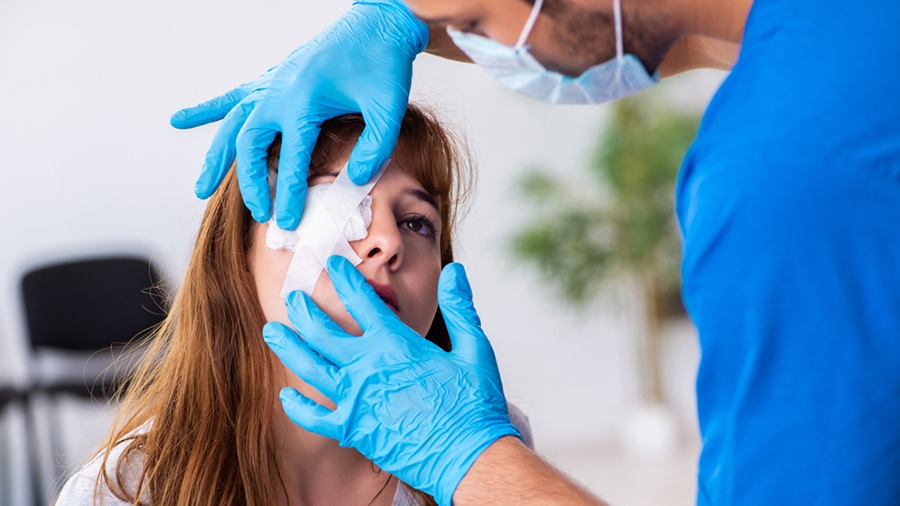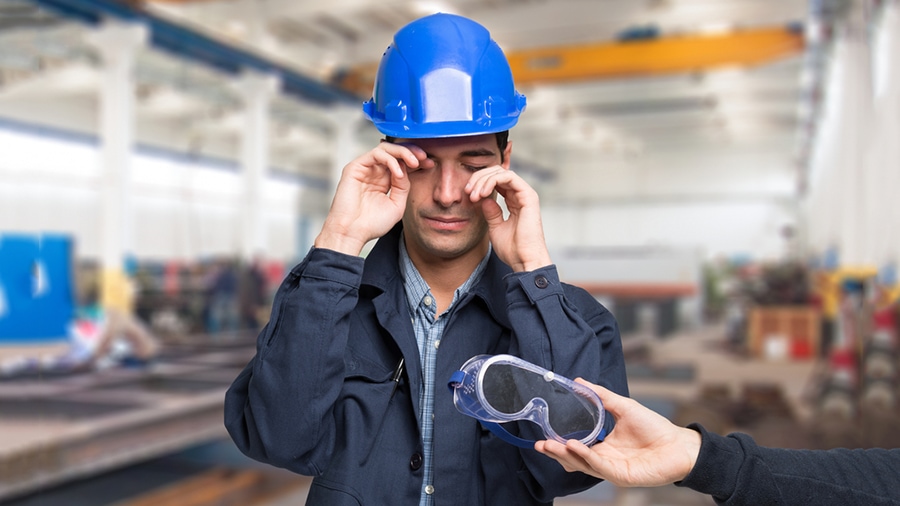Eye injuries at work: what you need to know
Each day, nearly 2,000 U.S. employees experience an on-the-job eye injury—one serious enough to require medical care. According to the National Institute for Occupational Safety and Health (NIOSH), as many as 100 of those injured then require time off from work. In the most severe cases, eye injuries result in vision loss—often considered permanent partial disability or total disability by the Georgia workers’ compensation system.
However, many workplace eye injuries are entirely preventable. Protective gear, environmental controls and carefully considered safety policies can help limit dangers, avoid accidents and reduce occupational illnesses. But because workplaces don’t always train employees on eye safety or offer the appropriate safety gear, workers may not realize how at risk they really are.
The organization Prevent Blindness recognizes Workplace Eye Wellness Month in March each year, making it a great time to take proactive steps toward preventing eye injuries on the job.
Common workplace eye injuries and how they occur
According to NIOSH, workplace eye injuries typically fall into three categories:
- Striking or scraping injuries
- Penetration injuries
- Burn injuries
Striking or scraping injuries may happen when a worker experiences a blow to the face or is struck by a falling object. But they also occur when dust, metal slivers, wood chips or cement particles enter the eye. Immediately painful, a scratched or scraped eye can also lead to blurry vision or light sensitivity, especially if the cornea has been damaged.
The American Academy of Ophthalmology recommends rinsing the eye or eyes with clean water or saline solution immediately. Positioning the upper eyelid over the lower eyelid can also sometimes brush away stuck particles. An ophthalmologist should evaluate the injury as soon as possible, but serious pain or vision problems warrant a trip to the emergency room.
Penetration injuries occur when objects like nails, wood slivers, glass or metal pierce the eye. This is always an emergency and should be treated immediately at a hospital.
Chemical burns may happen when cleaning products or industrial chemicals splash in the eyes. Thermal burns can happen when flames or hot grease or water damage the eyes. Ultraviolet light from arc welding or infrared light from lasers will also cause eye injuries without proper safety gear.
People working in construction, manufacturing, mining, auto repair, electrical work, plumbing and welding are most obviously at risk for traumatic eye injuries. But healthcare, maintenance and janitorial workers experience unique risks to their eyes as well. Pathogen exposure, often from blood splashes or contact with droplets, can lead to eye infections, or, in very rare cases, even hepatitis B or HIV.

Avoiding workplace eye injuries
It only takes a moment for an eye injury to occur. But protective gear, including safety glasses, goggles, face shields and full face respirators, can eliminate most serious eye injuries.
Employers have a duty to keep their workers safe, and in the case of some professions, this includes providing appropriate, well-fitting eye safety gear. The protective equipment needs to fit the job, be comfortable enough to wear during high-risk activities, not severely limit vision and fit with any corrective vision needs, whether that’s glasses or contact lenses.
According to the American Optometric Association, workers should wear safety glasses with side shields when there’s a risk for dust, particles or flying objects. Chemical protection requires goggles with a secure seal. And when workers are dealing with lasers, fiber optics or welding—potential sources of hazardous radiation—they need face shields, glasses, goggles or helmets made for the job.
Workplaces should have clear procedures on handling eye emergencies. Labs and manufacturing sites need eye washing stations or easy-access water sources to flush out irritants. Employees should feel comfortable reporting injuries and taking the time they need to get emergency care or see an ophthalmologist. While some eye injuries heal on their own, it’s always smart to get an injury evaluated before changes in vision occur.
Talk to an Atlanta workers’ comp attorney today
If you’ve experienced a workplace eye injury, it can take time before you’re able to return to your job. Contact the Law Offices of Laura Lanzisera today for a free consultation, or give us a call at 404-991-5097.
